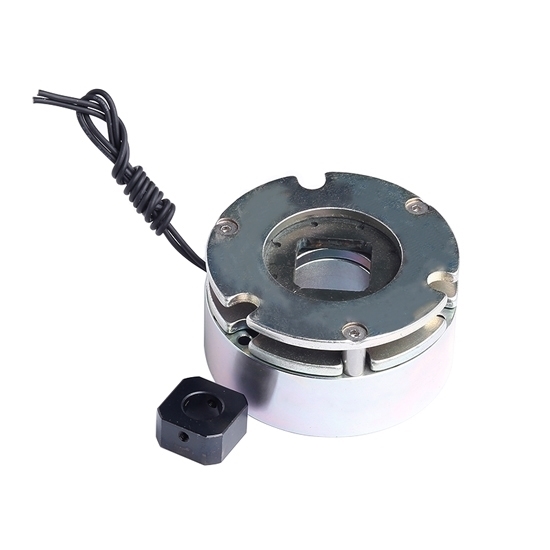
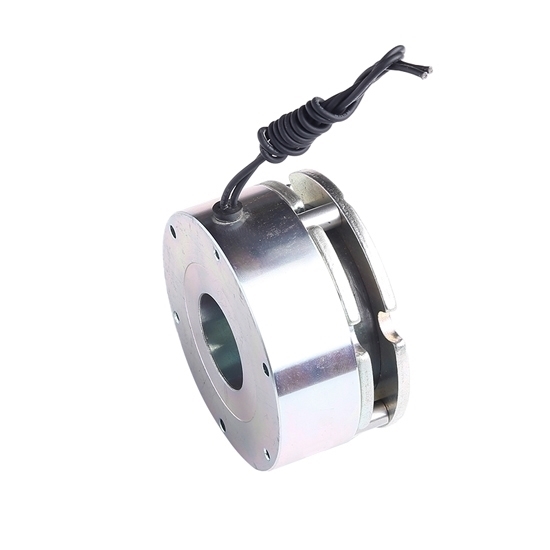
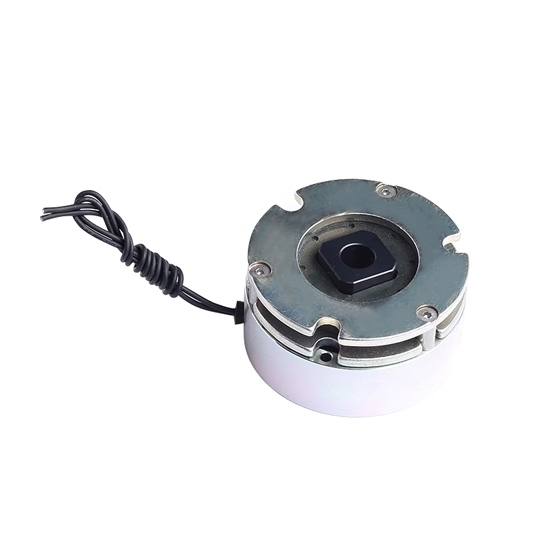
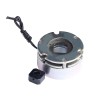
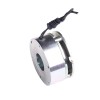
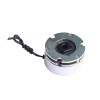
- Stock: In Stock
- Model: RDDLZ-POB-S60
- Weight: 1.00
- SKU: RDDLZ-POB-S60
Available Options
Shop a low-priced 1 Nm electromagnetic power off brake for servo and stepper motors. Our power off brake is designed for fast response and provides instant braking force to improve safety and prevent accidents in critical operating environments.
Specification
- Model: RDDLZ-POB-S060
- Static Torque: 1.3 Nm
- Rated Voltage: DC 24V
- Rated Power: 7.2W
- Closing Time: 50 m/s
- Max Speed: 2000rpm
- Disconnection Time: 20 m/s
- Insulation Grade: H
- Weight: 0.32kg
Features
- The electromagnetic power-off brake offers a dependable braking performance. The brake engages automatically when the power supply is interrupted or switched off.
- Power-off brakes are designed with a compact footprint, allowing for easy integration into various systems and machinery without occupying excessive space.
- The electromagnetic power-off brake has a quick response time, allowing for prompt engagement and disengagement.
- Due to their simple and robust design, 1 Nm power-off brakes require minimal maintenance.
Dimensions (unit: mm)
| Model | A | B | C | D | E | F*F | G | J | K | N | L | V | S | d | δ |
| RDDLZ--POB-S060 | 48 | 42 | 24 | 14 | 22 | 18 | 0.1 | 25.4 | 30.1 | 22.6 | 5 | 3.3 | 8 | 8 | 0.2 |
Applications
The electromagnetic power-off brake is suitable for various machinery applications such as metallurgy, machine tools, packaging, construction, chemical industry, food industry, stage equipment, elevators, ships, etc. It is used in situations where braking is required during power failure to achieve rapid stopping, precise positioning, and safe braking.
Tips: How does a power-off brake work?
A power-off brake, also known as an emergency brake or parking brake, is a mechanism designed to hold a vehicle stationary when it is not in use or in the event of a power failure. The brake is typically operated manually by the driver and is independent of the vehicle's regular braking system.
The exact design and operation of a power-off brake can vary depending on the type of vehicle, but I will provide a general overview of how it typically works in automotive applications:
- Lever or Pedal Activation: In most vehicles, the power-off brake is engaged by either pulling a lever or pressing a pedal. This mechanism is usually located within easy reach of the driver, such as on the center console or near the footwell.
- Cable or Mechanical Linkage: When the driver activates the power-off brake lever or pedal, it activates a cable or mechanical linkage system. This system transmits the force from the driver's input to the actual brake mechanism located near the wheels.
- Brake Calipers or Drums: The power-off brake is commonly designed to act on the rear wheels of the vehicle. In vehicles with disc brakes, the power-off brake often uses a separate set of calipers that are mechanically engaged when the brake is applied. These calipers can be similar to the ones used for regular braking but operated by a different mechanism. In vehicles with drum brakes, the power-off brake may use a mechanical linkage to expand the brake shoes against the inside of the drum.
- Friction and Holding Force: When the power-off brake is engaged, it creates friction between the brake pads or shoes and the braking surface (rotor or drum). This friction generates a holding force that prevents the vehicle from rolling. The force required to hold the vehicle in place varies depending on the weight of the vehicle and the slope of the surface it is parked on.
- Release Mechanism: To release the power-off brake, the driver typically disengages the lever or pedal. This action releases the tension in the cable or mechanical linkage, allowing the brake pads or shoes to retract from the braking surface, and the vehicle can then be put into motion.
